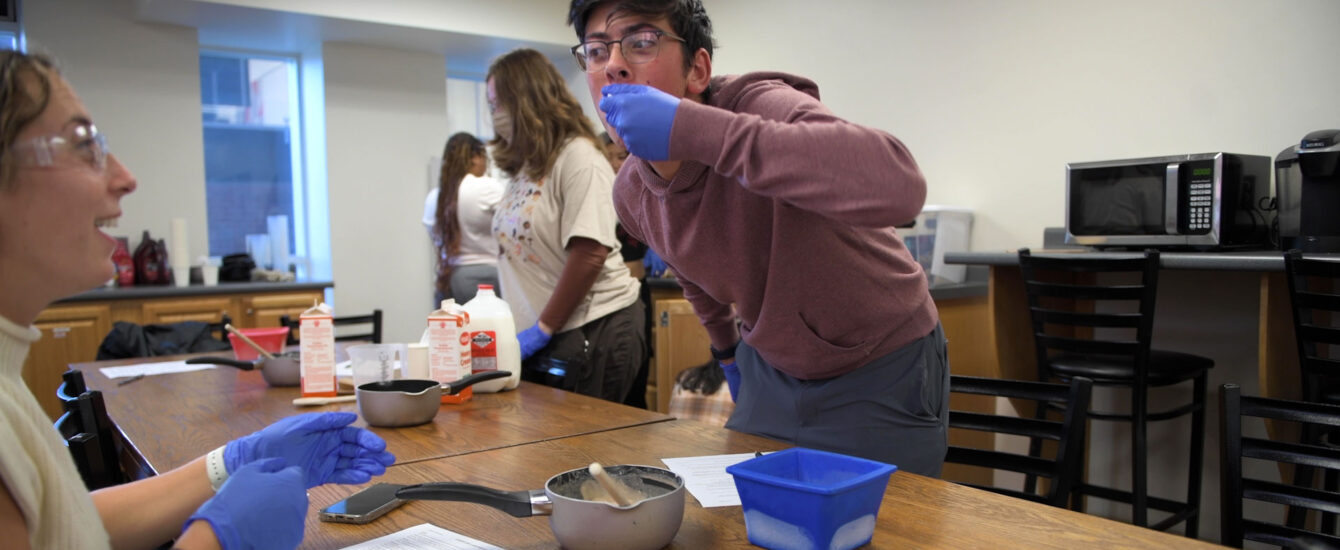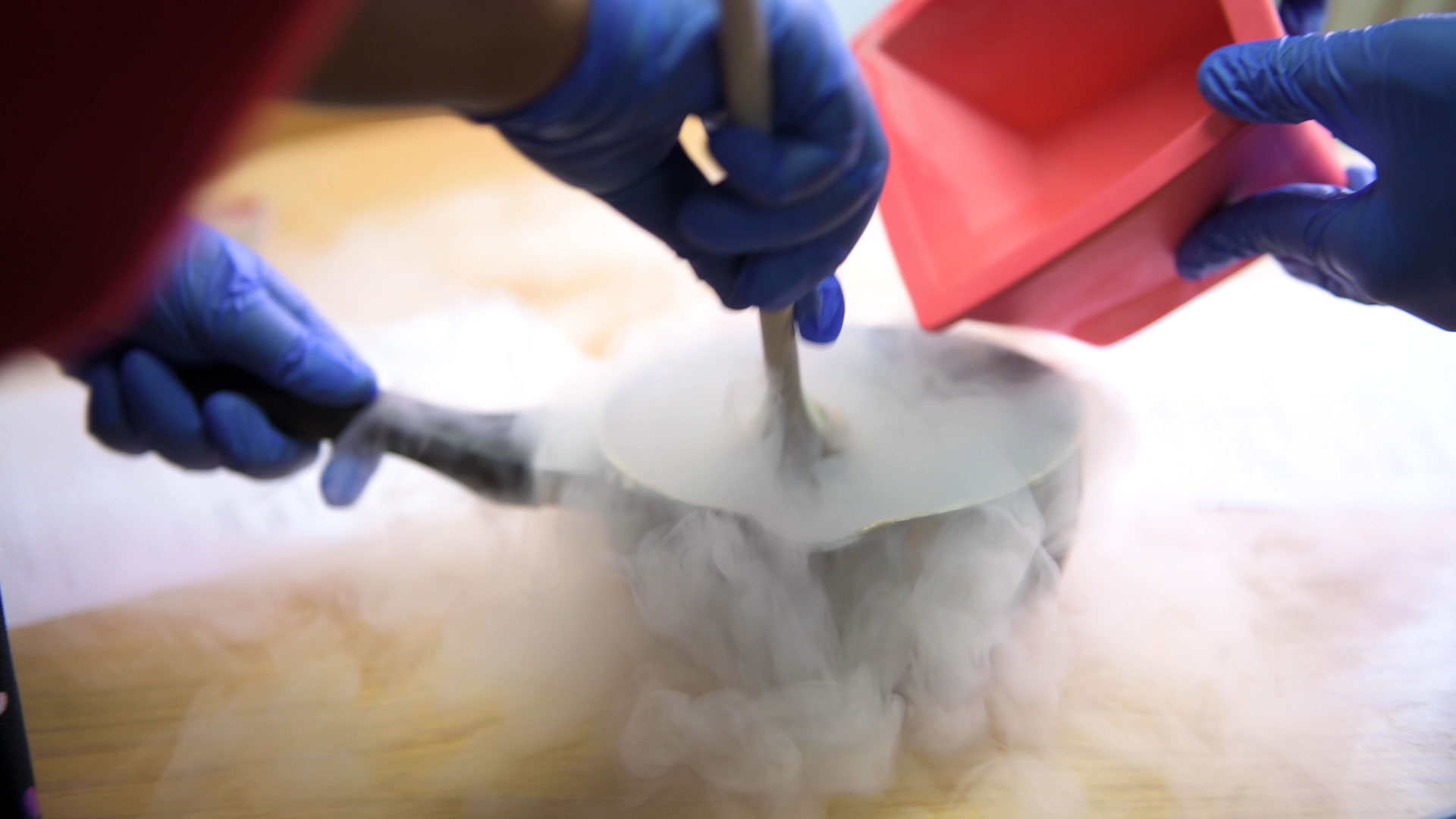
Syllabus: Clark in the Classroom
From the periodic table to the kitchen table
Talia Pizer ’25 and Tishy Cacciapaglia ’26 don’t consider themselves scientists, but thanks to a semester-long course called Kitchen Chemistry, they can now explain the chemical processes involved in making ice cream, butter, root beer, pickles, and other foods.
For Cacciapaglia, the just-completed undergraduate class at Clark was an approachable way to learn about the chemistry we use in everyday life — but don’t always know we are using.
“The labs have been more personal and more one-on-one. I’m not a science-y person, and I wouldn’t have been able to get this class done without the extra help in the lab,” she says.
Pizer appreciated the class’ focus on nutrition — the vitamins and minerals needed to stay healthy. “It’s nice to know what’s going into your body.”
Donald Spratt, associate professor in the Gustaf H. Carlson School of Chemistry and Biochemistry, started the class several years ago as an opportunity for non-science majors to fulfill a requirement for Clark’s liberal arts curriculum.
He originally designed the course for 16 students, but it attracted so many students each year, he ended up with 93 students this fall. They met for the large lecture three times a week and for the smaller labs — where they made their concoctions — every other week.
“Kitchen Chemistry is all about trying to get people not to be so scared of chemistry and also to realize chemistry is an everyday process,” Spratt says. “With the food we eat and prepare, we’re constantly making and breaking chemical bonds. Flavor, aroma, colors, and texture — all are related to chemistry.”
In the ice cream lab, Spratt gave students the chance to taste several batches to understand how to improve the texture — and discern why cheaper store-brand ice cream forms ice crystals.
“The way to get the best texture and mouthfeel with ice cream is to find the proper ratio between the milk and heavy cream — that’s what the students test when making ice cream in the lab,” he explains.
They started by making ice cream with 100 percent milk, which has only 3 percent fat and a larger percentage of water. They gradually made more batches, increasing the amount of heavy cream, which contains 36 percent fat, with less water.
“Everybody takes spoons and gets a taste of each batch to decide which tastes the most like store-bought ice cream, and why,” Spratt says. In the best home-made ice cream “we have more fat in there, and the opportunity for ice crystals to form is minimized, which means it’s not going to be crunchy ice cream but smooth ice cream.”
And because this is a chemistry class — and not their own kitchens — the students use liquid nitrogen to speed up the process of making ice cream.
“We only have so much time in the lab,” Spratt says. “Liquid nitrogen cools things down really quickly, so everybody feels like an alchemist for a few minutes.”
Another week, students made root beer to learn how drinks become carbonated. In bottles, they combined water; lots of sugar; an extract with spices and flavoring; and brewer’s yeast.
“Brewer’s yeast eats the sugars that are in that root beer and starts to produce carbon dioxide as a byproduct, and that gives it that sort of fizzy flavor,” Spratt explains. “This is what people did before they could make carbonated water. It’s a great learning moment to show how simple chemistry can happen in a bottle.”
And that’s some food for thought.

Photos and video by Steven King, university photographer; video editing by Andrew Hart, director of multimedia storytelling


